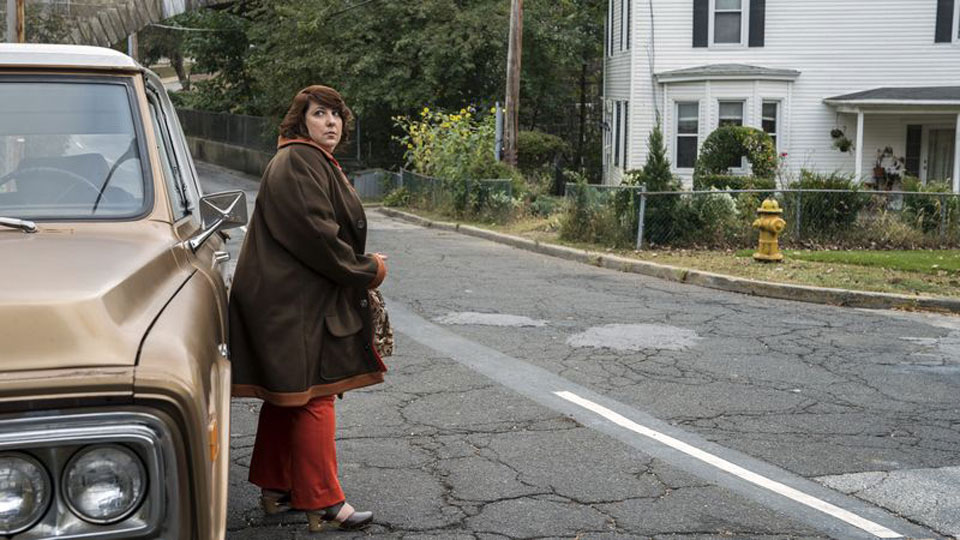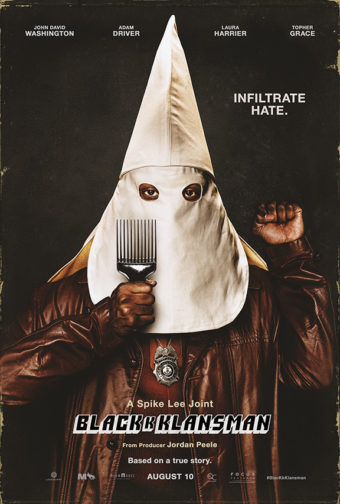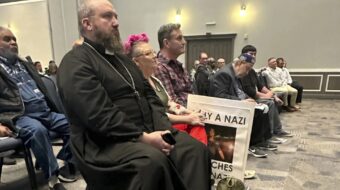
Warning: Minor movie spoilers ahead
“We knew that this film was going to have to connect, we did not want it to be a period piece…[given] this crazy guy in the White House.”
Those were the words of director Spike Lee on his most recent movie, BlacKkKlansman. It’s a film inspired by the true story of a Black police officer who takes the lead on an assignment to infiltrate the United States domestic terrorist organization that is the Ku Klux Klan in the early 1970s. Movie goers shouldn’t be fooled by the time setting of the film, because the themes in the movie, as Lee points out, are relevant to today now more than ever. It is a film that touches on issues such as racism, police corruption, and the power of rebranding hate campaigns to mask bigotry as mainstream logic—all things we are witnessing now in the era of the Trump.
There is one aspect of the movie that deserves a highlight of its own, one which may not get as much attention as other elements though it’s just as important in the narrative concerning the fight against racism. That is Lee’s symbolism of white women characters and their, at minimum, complacency toward if not outright encouragement of the mission of the Klan, along with the nuanced role that Black women played in the Black Power Movement. For just as other themes of the movie connect with today, that particular element, given that 53 percent of white women voted for Donald Trump, is also worth facing head on. In fact, it’s a must if we are to take the messages from the movie that aid in deconstructing the capitalist tool of white supremacy that breeds hatred, violence, and oppression.
BlacKkKlansman is a film heavy on male characters and male-dominated scenes, yet Lee does a commendable job showcasing the pivotal role of the women characters as well. It is very easy in films with male leads, even progressive-messaged ones, for the female characters to be reduced to nothing more than plot devices. Either that, or they lack the depth and nuance that their male characters are allowed. That is not the case with BlackKklansman. Two pivotal roles, played skillfully by Laura Harrier as Patrice Dumas and Ashlie Atkinson as Connie Kendrickson, helped to showcase the influence women can have on movements—on both ends of the spectrum.
Names such as Ida B. Wells, Fannie Lou Hamer, Angela Davis, Elaine Brown, and other Black women who have been on the frontlines of movements are known to a degree, but they don’t always get as much attention as their male counterparts throughout history. They may not have been the ones always speaking at the podium, but they often helped organize the program, event, or march, made sure the speakers were secure, and spoke against brutality and racism when allowed the space to do so.
Harrier’s Patrice Dumas character is a clear embodiment of all of this. She doesn’t give a speech at the podium, such as Kwame Ture (played by Corey Hawkins) does in the film, but she’s the president of the Black Student Union in Colorado Springs who made sure Ture was able to speak to the Black students there. She’s the voice that challenges the main character, Ron Stallworth (played by John David Washington), on questions of power dynamics and race. She explains to him that, as a Black woman, she’s not allowed to be apolitical in a system that constantly reminds her of being Black and a woman. She is also portrayed in the film as being the most vulnerable. When her car with Kwame is stopped, she’s groped by the police officers. Some Klan members see her as a threat, and opt for trying to kill her. This is not unheard of in today’s world, Black women bear some of the most vicious attacks, whether it be police rape or systemic oppression.
If Patrice Dumas is the embodiment of what Black women can be in the movement against oppression, then Connie Kendrickson is an unfortunate example of the role white women can play in strengthening white supremacy. Connie is the loyal housewife ready to scream “rape” in order to get Stallworth’s character beat up by other cops, to plant a bomb in the hopes to kill Patrice, and to cheerlead at Klan meetings with other white women. Connie is not a figment of Spike Lee’s imagination. Connie existed before the 1970s, during the 1970s, and she exists today. Connie is people like Carolyn Bryant Donham, who admitted to lying about 14-year-old Emmett Till, saying he whistled at her, which led to his lynching and murder. Connie is a segment of the 53 percent of white women who voted for Trump, implicitly supporting his tirades of bigotry and racism.
Lee makes a not-so-subtle decision to have David Duke thank not only male Klan members for “putting America first,” but also the white women in the room as well, tacking “and white women” onto the end of his speech. I believe this was certainly not just some throwaway line on Lee’s part, but rather a relevant connection to the very real divisions still with us today. Connie’s devotion to her “cause”—white supremacy—is chilling and absolutely had to be depicted. She’s not an involuntary member, but an active devotee.
Such a theme is important to note because it adds to the conversation around the future of our democracy, advancing question such as who is doing the work in bringing about change and what divisions need to be confronted. With an unprecedented number of women of color, particularly Black women, running for public office across the nation this year, along with organizing campaigns for change, a character such as Patrice deserves to be highlighted. The Patrices of the real world even more so.
What also deserves to be mentioned is the remembrance of Heather Heyer in the film, who happened to be white and was killed in Charlottesville for standing against hate last August. BlacKkKlansman makes a point to fast forward to today and highlight Heyer’s murder—and her courage. It’s important not only because of Heyer’s bravery, but because it showcases that just because some white women may feed into white supremacy and a system of exploitation, like Connie, this hate can hurt and kill anyone, and everyone.
The narratives of these three women, two fictitious and symbolic, one real and still symbolic, added to the layers of a poignant film that needs to be seen and understood by many. History is HerStory too, and it’s important to understand the roles everyone plays in it.
BlacKkKlansman is now playing in theaters. The trailer can be viewed here.












Comments